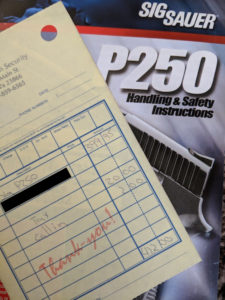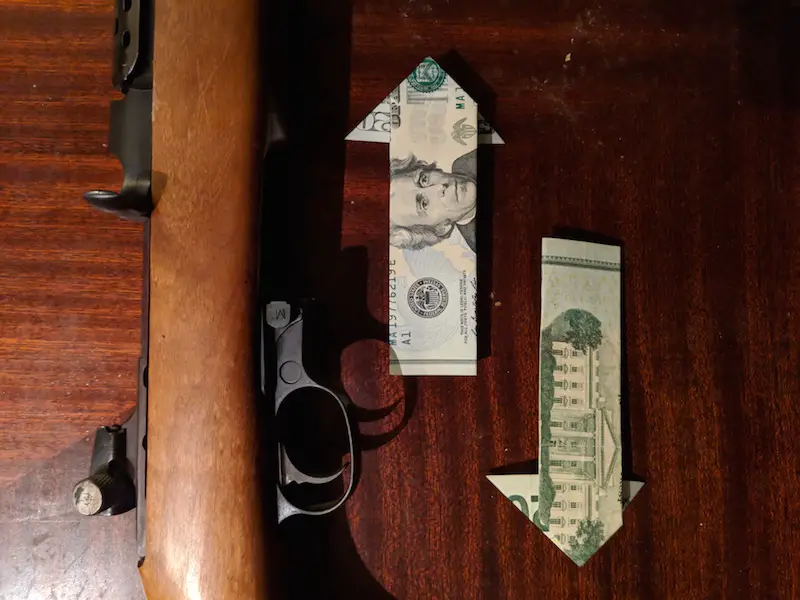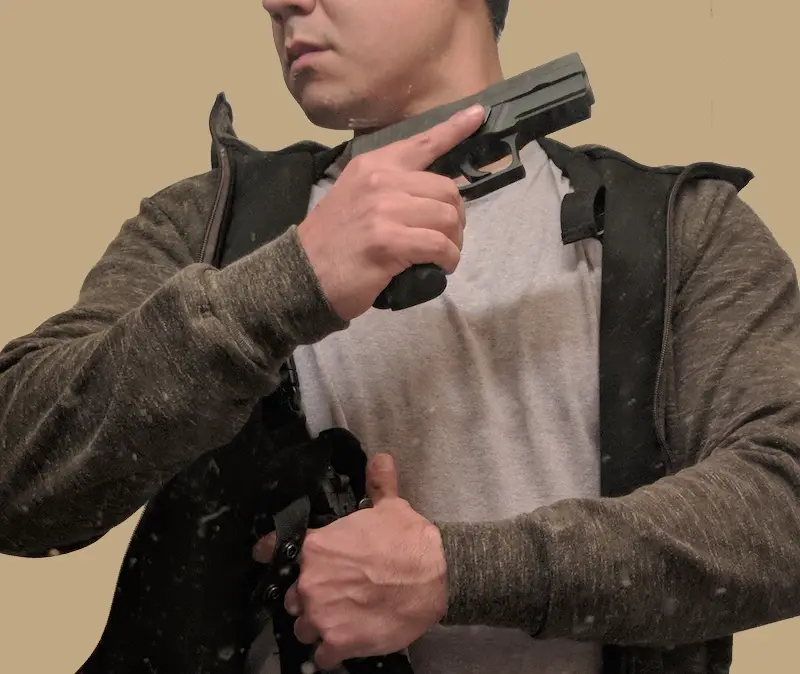Recently, I went to a buddies house to welcome him home from deployment. While I was there, he showed me some new additions to his house that had been done in his absence. However, we also took a peek at his gun collection (and his safe) just for giggles. His grandfather had handed him down some shotguns and other firearms and it got me thinking about whether guns depreciate in value, and what factors impact prices.
Is there a trend for depreciation, or appreciation, of firearms? Generally speaking, firearms will lose some of their value over time. However, when they reach antique status, the price will climb again. While the value of a gun may depreciate over time, it doesn’t lose as much value as goods in other industries. Gun (as well as ammo and accessory) prices will fluctuate based on a number of factors, including the current political climate and inflation.
There are other factors that will affect your loss (or profit) should you decide to liquidate your firearm supply. We’ll cover these in the sections below, so you know what to expect.
Table of Contents
Depreciation and Political Climate
With the midterm elections around the corner, I have no doubt that gun values will remain steady (perhaps even dip) or climb, depending on the outcomes. Firearms tend to appreciate in value under democrat regimes, and depreciate or remain constant under republican regimes. For instance, under the Obama administration, gun sales skyrocketed and have been in stead decline under Trump. The same holds true for the Clinton and Bush regimes. Both of these claims are reflected in this detailed report on gun sales statistics check out the University of Cincinnati.
Why Politics Impacts Gun Value
There are several reasons why gun values rise and fall with the shift in the political winds. First, and foremost, is the threat of legislation that would impact firearm ownership. Long have republicans been heralded as the supporters of the Second Amendment, while democrats have been painted as the opponent. Whether it is fear of having gun rights stripped away, or the need to simply “stock up” until republicans take power is unclear. What is clear, is that according to Frank Miniter at Forbes who published an article in 2016, the gun industry had grown by 158% since 2008.
What does this mean for the value of your gun? Well, if firearm manufacturers operate at a constant pace, and there is a sudden spike in demand it stands to reason that prices will increase when initial stock runs out. It’s simple supply and demand at work. Contrarily, if you look at the Trump administration, sales declined following his stunning upset of Hilary Clinton. And according to this Newsweek article, “distributors were canceling orders left and right.” Simply put, when a republican is in the oval office, there’s a sense of security and thus no need to purchase.
The Role of Inflation
Inflation can be loosely tied to the political climate as well. However, it is less about political affiliation, and more about economic stability. Regardless of whether the current president is a democrat, republican, or independent, gun prices typically track along the same lines as inflation. Unfortunately, to my knowledge, there is not comprehensive data on used firearm sales. If there is, I don’t think it breaks down firearm sales by make and model. I seriously doubt that data would account for any firearm accessories data associated with the sale. Furthermore, there is such a great degree of variance between sales for an abundance of reasons. I’ve listed some below:
- firearm care/maintenance
- haggling with the seller
- customization or accessories
- factory recalls
- and more!
Example of Pricing Over Time

personally identifiable information redacted – original purchase slip
However, for the sake of this article, I will use one of my own handgun for perspective. I will be talking about the purchase of my Sig Sauer P250 compact chambered in 9mm. This weapon was purchased from a gun show through an authorized vendor (i.e. not private sale), was new from the factory, and included an extra magazine. My pistol also has the glow in the dark (tritium) night sights, which can raise the value. I negotiated my price, so there is variance in pricing from that alone. However, all said and done the price was $422.00.
Bear in mind that this pistol is not old enough to be considered an antique. I’ve looked around the internet to find comparable prices, and they generally hover around the $300-$400 range used (approximately 71%-94%), which is slightly higher than I expected. Because my weapon was purchased new from the factory, I will be doing an apples to apples comparison of prices. Currently a new gun similar to the one I purchased appears to be going for around $649.00. Upon further investigation, this firearm is no longer available from the manufacturer, which could be the reason for a price spike. I’ll discuss gun appreciation in a later section.
Technology and Durability
Another factor when determining whether a gun has depreciated in value is newer models. When you purchase a computer or TV, you expect that in a short span of time — we’ll say less than a year — there will be a newer model released. In the electronics industry, newer models will be vastly different in both form and function. It wasn’t long ago that smart TV’s were introduced. Now there are 4K TV’s, and the list will likely continue to grow. If you compare this to your parents (or grandparents) CRT television from the 1980’s you can see why most people can’t even give their CRT away, let alone sell it.
Unlike the electronics industry, the firearm industry isn’t nearly as progressive. Pistols haven’t advanced from revolvers and auto-loaders for many decades. Sure these have been fine tuned, but little has drastically changed in the core functionality of the firearm. In fact, some of the most successful models (e.g. 1911) haven’t really changed at all. Frequently, newer models of a pistol are not vastly different from their predecessors other than looks. Sometimes, manufacturers refer to these new models using a generational code (e.g. Glock 17 Gen IV) other times they’ll name the newly wrapped model something completely different. However, because the weapons function and core design haven’t changed, is part of the reason why guns don’t depreciate at the same rate as goods in other industries.
Firearm Lifespan
Firearms are made to last, plain and simple. A well kept firearm should last a lifetime. There are very few components that can break or go bad in the modern firearm. Sure, you may need to replace a spring or part of a trigger assembly, but firearms are extremely durable with proper care. Furthermore, many firearms are extremely easy to work on, allowing owners the ability to maintain them. In addition, parts for replacing on a firearm are relatively cheap. This is part of the reason why firearms retains their value.
Now, lets contrast a gun with your vehicle. I know I’m not alone when it comes to outrageous repair bills for a car or truck. Furthermore, who has the time to do the work themselves? And when was the last time you knew someone who had the same car from when they were sixteen? It’s no wonder that vehicles depreciate at such a phenomenal rate.
Gun Appreciation a.k.a. Gaining Value
Alright, so we’ve talked about some reasons that guns might fluctuate negatively in value. But, what causes them to rise in value? One reason you might get a little extra “cha-ching” out of you gun is because it becomes a collectible. If a manufacturer ceases production of a model, or the manufacturer ceases to exist, the market has a finite amount of that firearm available. This is the same concept as classic cars or any other collectible. Along those lines, there may be limited production runs of a certain firearm, which make them a collectible almost immediately.
If a firearm is a desirable product, it may also increase in value. Taking my Sig P250 example, I was surprised to see the value of a “new” pistol to spike over my original purchase price. However, after some digging, I did find out that in early 2018 the P250 model was discontinued and no longer available on the Sig Sauer website. Because the platform is no longer available from the manufacturer, this could explain the variance in pricing for even used models, like mine.
Typically, a firearms status as a collectible results from the passage of time, more than anything else. When your gun becomes an antique, you will see the price rise. Unfortunately, for many of us that won’t happen until we’ve handed down our guns to future generations.
Location and Gun Values
While doing research for this article, I noticed that among the auctions and private sales, there seemed to be a great deal of variance between prices. Although some of this could be attributed to various accessories, enhancements, and cosmetic differences, I found that geographic location of the firearm seller can also impact price structures.
Locations where firearm sales are restricted by the state seem to increase the price of private (used) firearm sales. Generally speaking, “gun friendly” states where private sales, concealed carry, and gun laws in general are more lax, do not seem to have as high a price tag as those states who are more restrictive in their legislation (see the political climate section above).
One example I found saw a variance of almost $150 between two identical firearm sales! I can’t delve into the details about locations, models, etc. because I don’t want to violate any laws. However, I will say that the major difference between the two locations was the purchase requirements of one state over the other. The proverbial “red tape” seems to have an impact on pricing structure.
Parting Shots
While the value of guns does depreciate over time, they are not plagued by many of the same problems that other industries face. You can purchase a firearm, and reasonably expect to get 65%-75% of the original purchase value if you re-sell it. However, there are a great many factors that can impact if you fall below, above, or within this range.If you’re looking to purchase a firearm, check out this article to help in the selection process. Pay attention to items 9 through 11 which may impact resale value.
Should you be lucky enough to live to see your firearm become a collectible or antique you may actually make money. However, you aren’t going to make the kind of money you make in the stock market, so I wouldn’t invest in guns with the intent of retiring off the profit. What are your experiences with gun depreciation? If you’ve sold your weapon I’d love to hear about the details.









